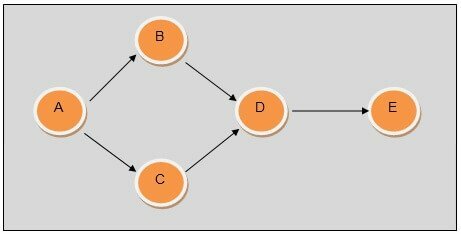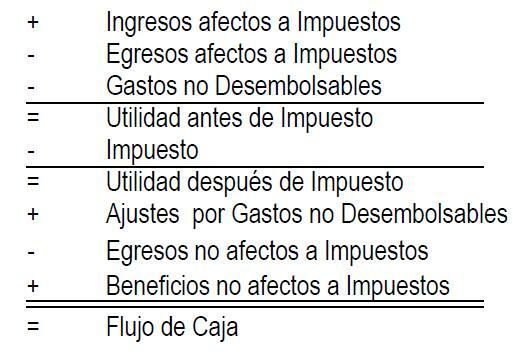The scope of the project establishes the limits and the specific characteristics of the work to be carried out, defining what is included and what is not included. within the project, such as objectives, expected results, deliverables, activities, restrictions, budget, as stated in the following examples.
He scope of a project refers to the limits and extent of what is included and excluded in a project to be developed.
Basically, it's the clear and precise definition of the objectives, expected results, deliverables, activities and limits of the project. Therefore, scope establishes the limits within which the project will be carried out, providing a clear vision of what will be achieved and what will not be included in it.
Advertisements

Develop the scope of a project It can be very simple if you are clear from the beginning what you hope to achieve, being very useful to avoid deviations from the objectives during the execution of the project, as well as the definition of the budget.
Advertisements
That is why in this post we propose 3 examples of the scope of a project in a practical and simple way; however, it should be remembered that the scope may vary according to the specifications of each project.
In this article you will find:
3 Examples of the scope of a project
These are just a few general examples of project scope; as the actual scope of a project will depend on specific factors, such as the industry, available resources, and the goals of the project itself.
Advertisements
1. Examples of scope of a project for the development of a mobile application
In this case, the example of the elaboration of the scope of a project for the development of a mobile application to manage tasks and reminders is presented; For this, the following elements are included:
- Objective of the project: Develop a mobile application that allows users to manage their daily tasks and set reminders to fulfill them efficiently.
-
Main functionalities:
- Task creation: Users will be able to create new tasks, assign them categories and set due dates.
- Reminders: The application will send notifications or alerts to users to remind them of pending tasks.
- Task prioritization: Users will be able to set the priority of tasks according to their importance.
- Organization: The application will allow you to organize tasks by categories or labels for a better classification.
- Mark tasks as complete: Users will be able to mark tasks as complete once they have completed them.
- Viewing and monitoring: Users will be able to see a summary of their pending tasks and the progress made.
- Supported platforms: The application will be available for mobile devices using the iOS and Android operating systems.
- User interface desing: The visual elements and the layout of the buttons, menus and screens will be defined to provide an intuitive and attractive user experience.
- Technical requirements: The technical requirements necessary for the development of the application will be specified, such as the programming language, development tools and integrations with other services or API.
- Scope excluded: The functionalities or characteristics that will not be included in the initial version of the application will be clearly defined.
- Restrictions and limitations: The restrictions and limitations of the project will be established, such as time restrictions, available resources and assigned budget.
- Deliverables: The main deliverables of the project will be identified, such as the user interface design, the developed mobile application and the technical documentation.
- Schedule: A detailed schedule will be established that includes the different stages of the project, such as the design, development, testing and launch of the application.
- Budget: An estimated budget will be defined for the development of the application, which includes costs of design, development, testing, marketing and any other costs associated with the project.
2. Example of a project scope for the implementation of an inventory management system
The actual scope of the project may vary depending on the specific needs and requirements of the company, as well as the characteristics of the information system. Inventory management has implement; In this practical case, the following is done:
Advertisements
- Objective of the project: Implement an efficient inventory management system that allows the company to have precise control of their stocks, optimize the supply of products and reduce the costs associated with the management of the inventory.
-
Analisys of requirements:
- Identification of necessities: Carry out a thorough analysis of the company's needs in terms of inventory management, considering aspects such as the quantity of products, inventory rotation, reorder points, among others.
- Definition of functionalities: Determine the functionalities required in the inventory management system, such as inventory tracking, inventory, check-in and check-out, product location control, reporting and analysis of data.
-
Scope of the inventory management system:
- Product registration: The system will allow the registration of the company's products, including information such as description, code, unit of measure, cost and sale price.
- Inventory control: The system will keep an updated record of the inventory, recording the inputs and outputs of products, as well as adjustments for returns or losses.
- Location Management: The system will allow specific locations to be assigned to products within the warehouse or storage area, facilitating their location and optimizing picking processes.
- Supplier management: The system will allow the management of supplier information, including contact details, purchase prices and delivery times.
- Report generation: The system will generate periodic reports on the status of the inventory, stock levels, movements and trends, facilitating decision making and purchase planning.
- Integrations: If necessary, the integrations with other existing systems in the company will be specified, such as the accounting or purchasing system, to ensure the synchronization of information and the automation of processes.
- Restrictions and limitations: The restrictions and limitations of the project will be established, such as time restrictions, available resources and assigned budget.
- Deliverables: The main deliverables of the project will be identified, such as the implementation of the inventory management system, software configuration, personnel training and technical documentation.
- Schedule: A detailed schedule will be established that includes the different stages of the project, such as requirements analysis, system configuration, testing and commissioning.
- Budget: An estimated budget will be defined for the implementation of the inventory management system, including costs software acquisition, configuration, training, data migration and any other costs associated with the project.
3. Example of the scope of a project for the development of a marketing plan
The elaboration of the scope of the development of a marketing plan Integral for a clothing brand could include the following elements:
- Objective of the project: Develop a comprehensive marketing plan that promotes the clothing brand, increases its visibility, attracts and retains customers, and generates an increase in sales.
- Brand and market analysis:
- Brand analysis: Evaluate the brand identity, its value proposition, its strengths and weaknesses, and its current positioning in the market.
- Market analysis: Research the brand's target market, including demographics, purchasing behaviors, industry trends, and competition.
-
Marketing strategy:
- Positioning: Define the desired positioning of the brand in the market, identifying the key attributes and the unique value proposition.
- Segmentation and targeting: Identify the most relevant market segments for the brand and select the target segments to focus marketing efforts.
- Product strategies: Define the brand's product strategy, including the range of products, distinctive features and product lines.
- Pricing Strategies: Establish the brand's pricing strategy, considering factors such as perceived quality, competition, and desired profit margins.
- Distribution Strategies: Determine the most effective distribution channels to reach the target audience and ensure product availability.
- Promotion Strategies: Develop promotional tactics, such as advertising, public relations, digital marketing, events and sponsorships, to increase visibility and generate demand.
-
Action plan:
- Activities Calendar: Establish a detailed schedule with the different marketing activities to be carried out, assigning dates, managers and necessary resources.
- Budget: Define an estimated budget for the execution of the marketing plan, including advertising costs, production of promotional materials, events, among others.
- Tracking Metrics: Identify key metrics to assess the performance of the marketing plan, such as the increase in sales, social media engagement, website traffic, and customer loyalty customers.
-
Implementation and monitoring:
- Execution: Implement the different marketing activities according to the established plan.
- Monitoring: Regularly track performance metrics to assess progress and make adjustments if necessary.
- Assessment: Analyze the results obtained in relation to the established objectives and make recommendations for future marketing strategies.


